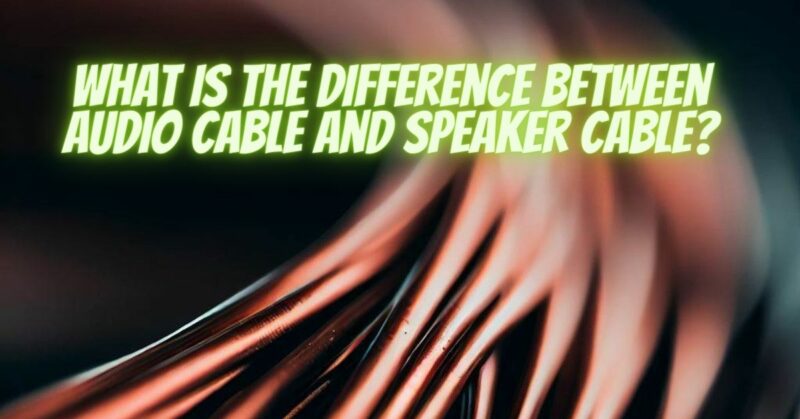When it comes to connecting audio equipment, the choice of cables plays a crucial role in ensuring optimal signal transmission and audio quality. Two common types of cables used in audio setups are audio cables and speaker cables. In this article, we will explore the differences between these two cable types and highlight their specific applications and characteristics.
- Signal Level and Impedance: One of the primary distinctions between audio cables and speaker cables lies in the signal level they handle. Audio cables are typically used for low-level signals, such as line-level connections between audio sources (e.g., CD player, preamplifier) and amplifiers or other audio components. These cables usually have lower impedance to match the output and input impedance of the audio devices involved.
On the other hand, speaker cables are designed to handle high-level signals that drive speakers directly. They carry the amplified audio signal from the power amplifier to the speakers. Speaker cables have higher impedance compared to audio cables to match the impedance requirements of the speakers, allowing for efficient power transfer.
- Conductor Size and Construction: Audio cables and speaker cables also differ in terms of conductor size and construction. Audio cables often use smaller-gauge conductors, as they carry lower-level signals. They may employ shielding to minimize electromagnetic interference and maintain signal integrity.
Speaker cables, on the other hand, require larger-gauge conductors to handle the higher current demands of powering speakers. They are designed to minimize resistance and signal loss, allowing for efficient power transmission. Speaker cables typically do not incorporate shielding since they carry amplified signals that are less susceptible to interference.
- Connectors: Audio cables and speaker cables may use different types of connectors based on their intended applications. Audio cables commonly use connectors such as RCA, XLR, or 3.5mm TRS plugs, depending on the specific audio devices and connections involved. These connectors are designed for low-level signal transfer and are often unbalanced (in the case of RCA or 3.5mm connectors) or balanced (in the case of XLR connectors) to suit different audio setups.
In contrast, speaker cables typically utilize connectors like banana plugs, spade connectors, or bare wire connections. These connectors are designed to handle the higher current and power requirements of speaker connections. They provide a secure and reliable connection between the amplifier and the speakers.
- Cable Length and Applications: Audio cables are commonly used for interconnecting audio components that are in close proximity, such as connecting a CD player to an amplifier or a mixer to powered speakers. They are generally available in shorter lengths due to the short distances involved in these connections.
Speaker cables, on the other hand, are used to connect power amplifiers to speakers, which may be positioned at a considerable distance from the amplifier. As a result, speaker cables are available in longer lengths to accommodate various speaker placement configurations.
Conclusion:
In summary, the main difference between audio cables and speaker cables lies in their application, signal level, impedance, conductor size, and connectors used. Audio cables are designed for low-level signals and interconnecting audio components, while speaker cables are specifically designed for high-level signals to drive speakers. Understanding the differences between these cable types is essential for selecting the appropriate cables for your specific audio setup and ensuring optimal signal transmission and audio quality.


